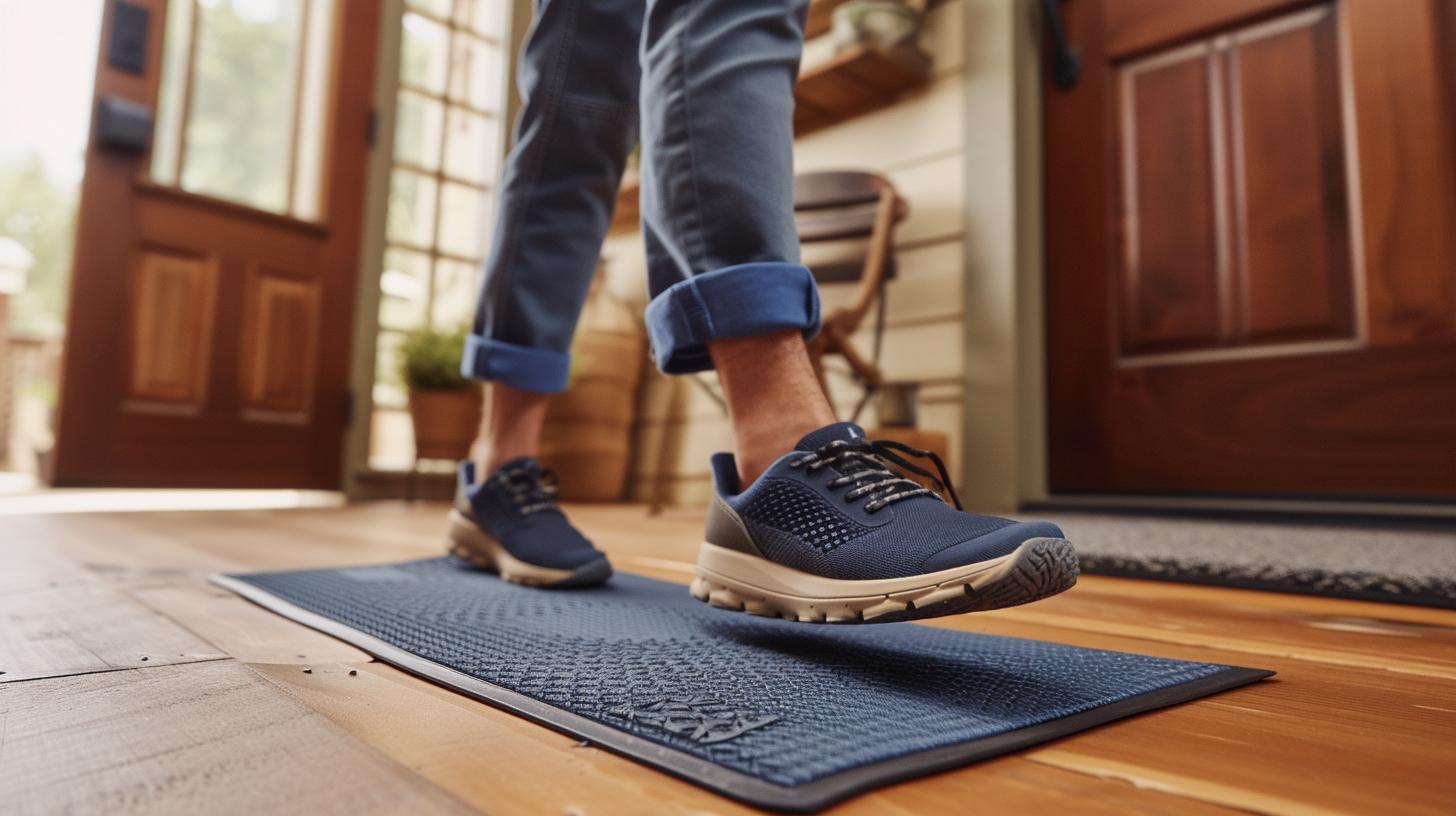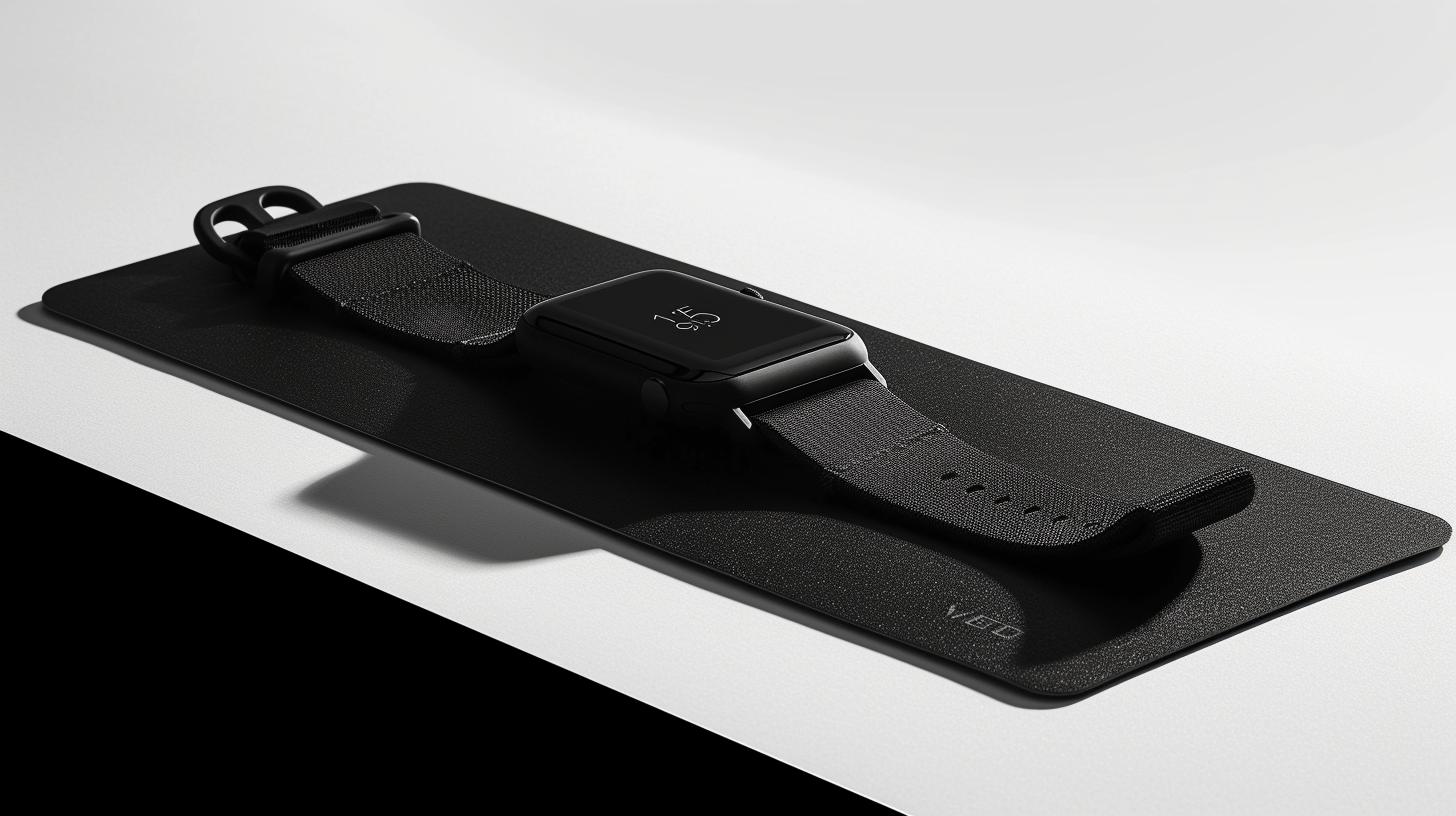
What is a floor on Fitbit? Fitness tracking has become an essential part of many people’s lives, and devices such as Fitbit have made it easier than ever to monitor physical activity levels. One of the key measurements provided by Fitbit is the concept of “floors,” which plays a crucial role in understanding overall fitness progress.
Understanding floors on Fitbit involves more than just counting steps taken. It incorporates the measurement of elevation gained through stair climbing or uphill terrain, providing valuable insight into a person’s physical activity throughout the day. In this article, we will delve into what constitutes a floor on Fitbit, how it differs from tracking steps, and the significance of monitoring floor count for overall fitness goals.
By taking a closer look at how Fitbit tracks floors and setting specific floor climbing goals, individuals can enhance their fitness routines while targeting different muscle groups and increasing overall cardiovascular endurance. Additionally, participating in challenges and competitions within the Fitbit community provides opportunities for motivation and camaraderie as users strive to achieve their floor climbing objectives.
Incorporating stair climbing activities into workouts presents yet another way to elevate daily physical activity levels and boost overall fitness. From practical tips for increasing floor count to understanding the differences in tracking building floors versus outdoor floors, this article aims to provide comprehensive insights into effectively utilizing the floor measurement feature on Fitbit for optimizing health and wellness outcomes.
Understanding Floors
When it comes to tracking fitness levels and physical activity, Fitbit has become a popular tool for individuals looking to monitor their daily exercise routines. One important aspect of Fitbit’s tracking capabilities is the concept of “floors.” But what is a floor on Fitbit, and how does it contribute to overall fitness tracking?
Simply put, a floor on Fitbit represents any elevation gain equivalent to climbing 10 feet of stairs. This means that every time you climb the equivalent of 10 vertical feet, whether it’s up a flight of stairs or an incline, Fitbit will count it as one floor climbed. This measurement is important for individuals who want to track not only the number of steps taken but also the vertical distance covered throughout the day.
Unlike tracking steps, counting floors climbed provides valuable insight into an individual’s overall physical activity level by incorporating elevation changes into the equation. This is especially beneficial for those who engage in activities like hiking, hill walking, or simply navigating multi-level buildings throughout the day.
Fitbit tracks floors through its built-in altimeter sensor, which measures changes in air pressure to determine changes in altitude. The device utilizes this data to accurately calculate the number of floors climbed based on the user’s movements and changes in elevation throughout the day.
One key reason why tracking floors on Fitbit is important for overall physical activity monitoring is that it encourages individuals to incorporate stair climbing into their daily routines. Climbing stairs offers numerous health benefits, including cardiovascular conditioning, lower body strength development, and calorie burning. By setting goals specifically for floor climbing, users can actively work towards enhancing their overall fitness and wellness.
Incorporating floor climbing into one’s daily routine can also help break up sedentary behavior and promote more movement throughout the day. Even simple actions such as taking the stairs instead of using an elevator or escalator can contribute to increasing daily floor count and boosting physical activity levels. Overall, understanding what a floor is on Fitbit provides valuable insights into one’s vertical movement and contributes to a comprehensive approach to fitness tracking and goal setting.
Floors vs Steps
Understanding the distinction between tracking floors climbed and steps taken is essential for comprehending the full scope of physical activity measurement on a Fitbit device. While steps are a primary metric for overall movement and exercise, floors climbed add an additional layer of tracking vertical movement, which can significantly impact fitness goals.
On Fitbit devices, a floor is defined as the equivalent of climbing 10 feet vertically. This can be achieved by walking up a flight of stairs or ascending a steep hill. The device uses altimeter sensors to detect changes in elevation, accurately measuring the number of floors climbed throughout the day. This data provides valuable insight into one’s overall physical exertion and helps individuals monitor their daily progress.
The difference between tracking steps and tracking floors lies in the dimensional aspect of movement. Steps primarily measure horizontal movement, while floors add a vertical component to physical activity tracking. Both metrics provide valuable information about an individual’s level of physical activity and contribute to a comprehensive understanding of overall fitness goals.
For those focused on cardio and endurance training, accumulating steps may be the primary focus, as it represents sustained movement over long distances. On the other hand, those aiming to increase leg strength and power may prioritize floor climbing as part of their workout routine. By understanding the nuance between these two measurements, users can tailor their fitness strategies to achieve well-rounded results.
On Fitbit devices such as Versa and Charge models, users have access to real-time data on both steps taken and floors climbed throughout the day. This allows for regular monitoring of progress towards daily fitness targets and offers insights into how various activities contribute to overall physical health.
In summary, while steps provide an indication of horizontal movement, floors climbed offer a unique perspective on vertical exertion that is vital for achieving comprehensive fitness goals. By incorporating both metrics into daily activity monitoring, individuals can gain a more holistic understanding of their physical health and make informed decisions about their exercise routines.
| Floors Climbed | Steps Taken |
|---|---|
| Measures vertical exertion | Measures horizontal movement |
| 10 feet vertically = 1 floor | Sustained movement over long distances |
| Contributes to leg strength training | Indication of cardio and endurance levels |
| Monitors daily progress towards fitness targets | Offers insights into various activities’ impact on health |
How Fitbit Tracks Floors
Fitbit is a popular fitness tracker that helps individuals monitor and improve their overall physical activity levels. One of the key metrics that Fitbit tracks is floors climbed, which provides valuable insights into an individual’s daily movement and exercise. This section will delve into how Fitbit utilizes technology and sensors to accurately measure floors climbed throughout the day.
What Is a Floor on Fitbit?
Firstly, it is important to understand what exactly constitutes a “floor” on Fitbit. In simple terms, a floor is counted when an individual ascends the equivalent of 10 feet in elevation. This can be achieved by climbing stairs, walking uphill, or engaging in activities that involve vertical movement.
Technology and Sensors
Fitbit uses a combination of altimeters and barometers to track changes in elevation throughout the day. Altimeters measure altitude based on changes in air pressure, while barometers provide more accurate readings of changes in elevation when compared to altimeters alone. By combining these sensors, Fitbit can accurately detect when a user has climbed a floor, providing real-time data on this specific aspect of physical activity.
Accuracy and Reliability
The accuracy and reliability of floor tracking on Fitbit have been continuously improved with advancements in sensor technology. Newer models of Fitbit devices are equipped with enhanced altimeters and barometers that offer more precise measurements of elevation changes. Additionally, software updates further optimize the tracking algorithms, ensuring that users receive accurate data regarding floors climbed throughout the day.
Indoor vs Outdoor Tracking
Fitbit’s technology for tracking floors takes into account both indoor and outdoor environments. Whether an individual climbs stairs inside a building or hikes up a hill outside, the sensors are designed to accurately capture these movements and translate them into measurable floors climbed. This versatility allows users to monitor their physical activity across various settings and locations.
Data Analysis
Once the data on floors climbed is collected by Fitbit, it can be analyzed within the app or web platform to gain insights into daily trends, progress over time, and overall physical activity levels. Users can set goals for floor climbing, track their achievements, and make adjustments to their fitness routines based on this valuable information.
The ability to access detailed analytics regarding floors climbed adds another layer of motivation and accountability for individuals striving to stay active throughout their day.
Benefits of Tracking Floors
Tracking floors on Fitbit offers numerous health benefits and contributes to overall fitness and wellness. Here are some of the key advantages of incorporating floor climbing into daily physical activity:
- Cardiovascular Health: Climbing stairs or inclines is a great way to get your heart pumping and improve cardiovascular health. By elevating your heart rate through floor climbing, you can effectively boost your cardiorespiratory fitness, which is essential for overall heart health.
- Strength Building: Climbing stairs engages major muscle groups in the lower body, including the quadriceps, hamstrings, glutes, and calves. This type of resistance training can help build strength and endurance in these muscle groups, leading to improved functional fitness and lower body strength.
- Calorie Burning: Floor climbing is a highly effective way to burn calories. As you work against gravity to ascend each step or floor, you are expending energy and torching calories. This can contribute to weight management and overall calorie balance when combined with a healthy diet.
- Bone Health: The impact of repeatedly lifting your body weight with each step can help promote bone density and reduce the risk of osteoporosis. Regularly engaging in activities that involve vertical movement, such as climbing stairs or inclines, can contribute to better bone health over time.
- Mental Wellbeing: Incorporating floor climbing into your daily routine can also have positive effects on mental wellbeing. Physical activity has been linked to reduced stress levels, improved mood, and enhanced cognitive function. Climbing stairs or floors may offer a unique challenge that keeps workouts engaging and mentally stimulating.
Overall, tracking floors climbed on Fitbit provides valuable insights into the diverse ways in which this type of physical activity contributes to overall fitness and wellness. By understanding the specific benefits associated with floor climbing, individuals can make informed choices about how they structure their daily activity routines to optimize their health outcomes.

As users become more aware of how beneficial floor climbing can be for their physical health, they may be inspired to seek out opportunities for incorporating stair climbing or incline-based activities into their regular exercise regimen. Whether it’s taking the stairs instead of an elevator or adding hill repeats to a running workout, individuals can leverage these insights to strategically boost their overall physical activity levels.
By highlighting these benefits of tracking floors on Fitbit, individuals are empowered to take control of their fitness journey by leveraging existing data and technology to inform their decision-making around physical activity habits. This heightened awareness allows users to explore creative ways to integrate more floor climbing into their daily lives while reaping the wide-ranging rewards that come with this form of exercise.
Setting Floor Goals
Setting and achieving floor climbing goals using Fitbit can be an excellent way to boost overall physical activity and improve fitness levels. Whether aiming to increase daily movement or training for specific fitness targets, setting clear floor goals can provide direction and motivation for users of the popular fitness tracker.
Setting Realistic Goals
When establishing floor climbing goals with Fitbit, it’s important to set realistic targets based on individual fitness levels and capabilities. Gradually increasing the daily floor count over time can help prevent burnout and reduce the risk of injury while allowing for steady progress towards higher fitness achievements.
Using Fitbit Data
Fitbit provides valuable data and insights into daily physical activity, including floors climbed, which can be used to track progress and adjust goals accordingly. By analyzing trends in floor counts over weeks or months, users can identify patterns in their activity levels and make informed decisions about setting new challenges or modifying existing objectives.
Tracking Progress
Utilizing Fitbit’s tracking features allows users to monitor their progress towards floor climbing goals, offering a visual representation of their daily activity levels. Regularly reviewing this data can serve as a source of motivation and encouragement, especially when working towards hitting specific milestones or personal bests.
Increasing Floor Count Strategies
Incorporating additional activities into daily routines can help increase overall floor count, such as taking the stairs instead of using elevators, going for walks in hilly areas, or participating in stair-climbing workouts. Implementing small changes like these can contribute to significant increases in overall physical activity levels over time.
Community Support
Engaging with the Fitbit community provides opportunities to connect with other users who share similar fitness goals, offering support and accountability through challenges and competitions focused on floor climbing. Participating in these communal activities can help maintain motivation and foster a sense of camaraderie while striving towards achieving personal fitness objectives.
By utilizing the capabilities of Fitbit to set clear floor climbing goals, track progress, implement strategies for increasing floor count, and engaging with the community for support, individuals can effectively work towards improving their overall physical fitness levels while enjoying the journey towards reaching their desired health objectives.
Challenges and Competitions
Participating in challenges and competitions within the Fitbit community can be a fun and motivating way to stay engaged with fitness goals. Fitbit offers various challenges and competitions that focus on different aspects of physical activity, including floor climbing. These challenges often involve setting daily or weekly goals for floor count, and users can compete with friends, family members, or other Fitbit users to see who can climb the most floors within a specific time frame.
One popular challenge within the Fitbit community is the “Workweek Hustle,” where participants aim to outdo each other in terms of total floors climbed from Monday to Friday. This type of competition encourages consistent physical activity throughout the workweek and promotes healthy habits, especially for individuals who may have sedentary jobs. Additionally, there are weekend warrior challenges which take place over the weekend where individuals try to outpace one another towards their floor counts.

Joining challenges like these not only provides motivation to increase floor count but also creates a sense of camaraderie and friendly competition among participants. This social aspect of fitness tracking can be highly beneficial for individuals who thrive on encouragement and support from others. Seeing friends or fellow Fitbit users reaching their floor-climbing goals can inspire others to push themselves further in their own fitness journey.
Beyond personal achievements, participating in challenges and competitions can also help users discover new ways to incorporate floor climbing into their daily routines. Whether it’s taking the stairs instead of the elevator at work or seeking out hilly terrain during outdoor walks, engagement in these activities not only contributes to individual fitness progress but also strengthens the overall sense of community within the Fitbit platform.
For those who prefer more competitive settings, joinings teams with colleagues or friends adds an extra layer that competitors will strive towards. Each member’s contribution grants a team points allowing them towards coming together successfully as a contesting entity.
Moreover, engaging in friendly competition on Fitbit provides users with opportunities for personal growth when it comes to fitness levels. As they strive to beat personal records during these challenges using their smartwatches or smartphones connected to fitbit devices thanks by having location features turned on, they’re likely growing stronger overall whilst participating virtually amongst other members across geographical backgrounds wider than practically feasible otherwise.
| Fitbit Challenge Type | Description |
|---|---|
| Workweek Hustle | Aimed at beating others’ total floors climbed from Monday-Friday. |
| Weekend Warrior | A Weekend Challenge until Sunday’s end aiming for total floors per participant. |
| Community Team Challenges | Pitted against others collectively moving forward. |
Incorporating Stair Climbing Into Workouts
Stair climbing is a fantastic way to increase physical activity and elevate overall fitness levels, and incorporating this activity into workouts can have numerous health benefits. When it comes to tracking fitness levels using Fitbit, understanding the concept of floors climbed is essential.
Essentially, a floor on Fitbit refers to the measurement of elevation gained by climbing stairs or walking uphill. By incorporating stair climbing activities into your fitness routine, you can effectively increase your floor count, which contributes to overall physical activity levels.
One of the key advantages of stair climbing is its effectiveness in providing a cardiovascular workout while also engaging major muscle groups such as the quadriceps, hamstrings, glutes, and calves. This form of exercise not only helps in burning calories but also strengthens these muscle groups, ultimately contributing to improved lower body strength and endurance. Additionally, stair climbing can also improve cardiovascular health by increasing heart rate and boosting lung function.
Fitbit utilizes advanced technology and sensors to accurately measure floors climbed throughout the day. As users climb stairs or navigate hilly terrain during their daily activities or workouts, Fitbit’s sensors detect changes in elevation and record them as floors climbed. This data provides valuable insights into overall physical activity levels and can be used to set and achieve floor climbing goals.
To incorporate stair climbing into workouts and increase floor count on Fitbit, individuals can consider several strategies such as interval training on stairs, adding stair climbs to regular walks or runs, using a stair climber machine at the gym, or simply seeking out opportunities for stair climbing in daily routines. These activities not only help in achieving floor climbing goals but also add variety to workouts while effectively elevating overall physical activity levels.
Tips for Increasing Daily Floor Count
Adding more floor climbing into your daily routine is a fantastic way to elevate your physical activity levels and improve overall fitness. Here are some practical suggestions for increasing your daily floor count, whether you use a Fitbit or simply want to incorporate more stair climbing into your day.
One of the most effective ways to increase your daily floor count is by choosing to take the stairs instead of the elevator or escalator whenever possible. This simple switch can make a big difference in the number of floors you climb throughout the day. If you work in a multi-level building or live in an apartment complex, this can be an easy and convenient way to sneak in some extra physical activity.
In addition to taking the stairs, finding creative ways to add more movement and elevation into your routine can also help boost your daily floor count. For example, you could park in a spot that requires walking up a slope or hill to reach your destination rather than parking on flat ground. Choosing walking paths that include inclines or hills can also contribute to increasing your overall floor count.
Another tip for increasing daily floor climbing is to incorporate short bursts of stair climbing into your existing workout routine. This could involve adding a section of stair climbing at the beginning or end of a run, walk, or gym session. By integrating stair climbing into activities you already enjoy, you can easily elevate both your heart rate and total floors climbed.
Finding opportunities to increase physical activity throughout the day, such as doing household chores that involve going up and down stairs or opting for outdoor activities that naturally incorporate elevation changes, can also be beneficial for adding more floor climbing into your routine.
By being mindful of daily opportunities for incorporating floor climbing into your routine, you can boost overall physical activity levels and improve cardiovascular health while working toward achieving personal fitness goals. Whether it’s using a Fitbit device to track floors climbed or simply aiming for a healthier lifestyle, incorporating these tips into your daily routine can have a positive impact on overall well-being.
Tracking Building Floors vs Outdoor Floors
In conclusion, understanding what a floor is on Fitbit is essential for users who want to accurately track their physical activity levels and overall fitness progress. The concept of floors climbed goes beyond just counting steps taken, as it provides valuable insight into the intensity and variety of physical activity throughout the day.
By recognizing the differences in tracking building floors versus outdoor floors, Fitbit users can make more informed decisions about their daily exercise routines and maximize the effectiveness of their fitness tracking.
One of the key takeaways from understanding the differences in tracking building floors versus outdoor floors is the impact on fitness tracking accuracy. Fitbit utilizes advanced technology and sensors to measure floors climbed, but there are inherent challenges when it comes to accurately measuring elevation changes in different environments.
Users who primarily engage in outdoor activities may notice variations in their floor count compared to those who mainly climb stairs indoors. It’s important to keep this factor in mind when setting floor climbing goals and interpreting the data provided by Fitbit.
Furthermore, incorporating both building floors and outdoor terrain into one’s physical activity routine can provide a well-rounded approach to fitness tracking. By diversifying the types of surfaces and inclines encountered during exercise, individuals can challenge different muscle groups and cardiovascular systems, leading to overall improved fitness levels. Additionally, engaging with various environments encourages individuals to explore new settings for physical activity, promoting a sense of adventure and enjoyment in staying active.
As technology continues to advance, Fitbit may find ways to further enhance its accuracy in tracking building floors versus outdoor floors. In the meantime, users can optimize their fitness tracking by being mindful of the potential discrepancies between indoor and outdoor floor counts. Ultimately, understanding these differences empowers Fitbit users to make informed decisions about how they incorporate various terrains into their fitness routines while utilizing a comprehensive approach to monitoring their physical activity levels.








